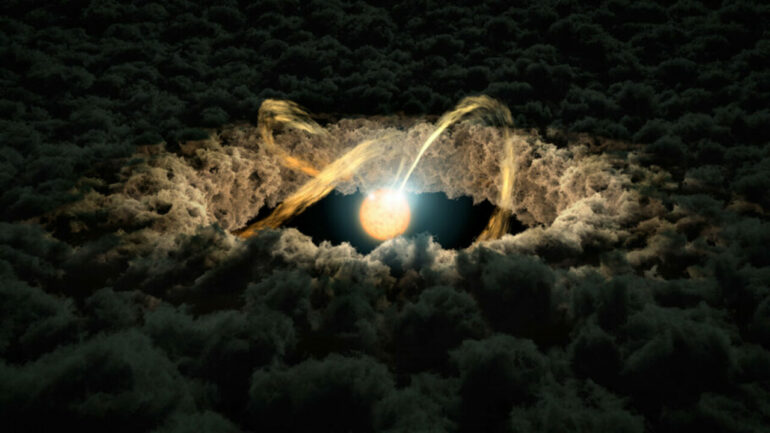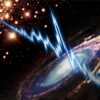Michigan State University’s Seth Jacobson and colleagues in China and France have unveiled a new theory that could help solve a galactic mystery of how our solar system evolved. Specifically, how did the gas giants—Jupiter, Saturn, Uranus and Neptune—end up where they are, orbiting the sun like they do?
The research also has implications for how terrestrial planets such as Earth were formed and the possibility that a fifth gas giant lurks 50 billion miles out into the distance.
“Our solar system hasn’t always looked the way that it does today. Over its history, the orbits of the planets have changed radically,” said Jacobson, an assistant professor in the College of Natural Science’s Department of Earth and Environmental Sciences. “But we can figure out what’s happened.”
The research, published in the journal Nature on April 27, offers an explanation for what happened to gas giants in other solar systems and ours.
It’s a Nice model
Stars are born from massive, swirling clouds of cosmic gas and dust. Once our sun ignited, the early solar system was still filled with a primordial disk of gas that played an integral role in the formation and evolution of the planets, including the gas giants.
In the late 20th century, scientists began to believe that the gas giants initially circled the sun in neat, compact, evenly-spaced orbits. Jupiter, Saturn and the others, however, have long settled into orbits that are relatively oblong, askew and spread out.
So the question for researchers now is “Why?”
In 2005, an international team of scientists proposed an answer to that question in a trio of landmark Nature papers. The solution was originally developed in Nice, France and is known as the Nice model. It posits that there was an instability among these planets, a chaotic set of gravitational interactions that ultimately set them on their current paths.
“This was a tectonic shift in how people thought about the early solar system,” Jacobson said.
The Nice model remains a leading explanation, but over the past 17 years, scientists have found new questions to ask about what triggers the Nice model instability.
For example, it was originally thought that the gas giant instability took place hundreds of millions of years after the dispersal of that primordial gas disk that birthed the solar system. But newer evidence, including some found in moon rocks



